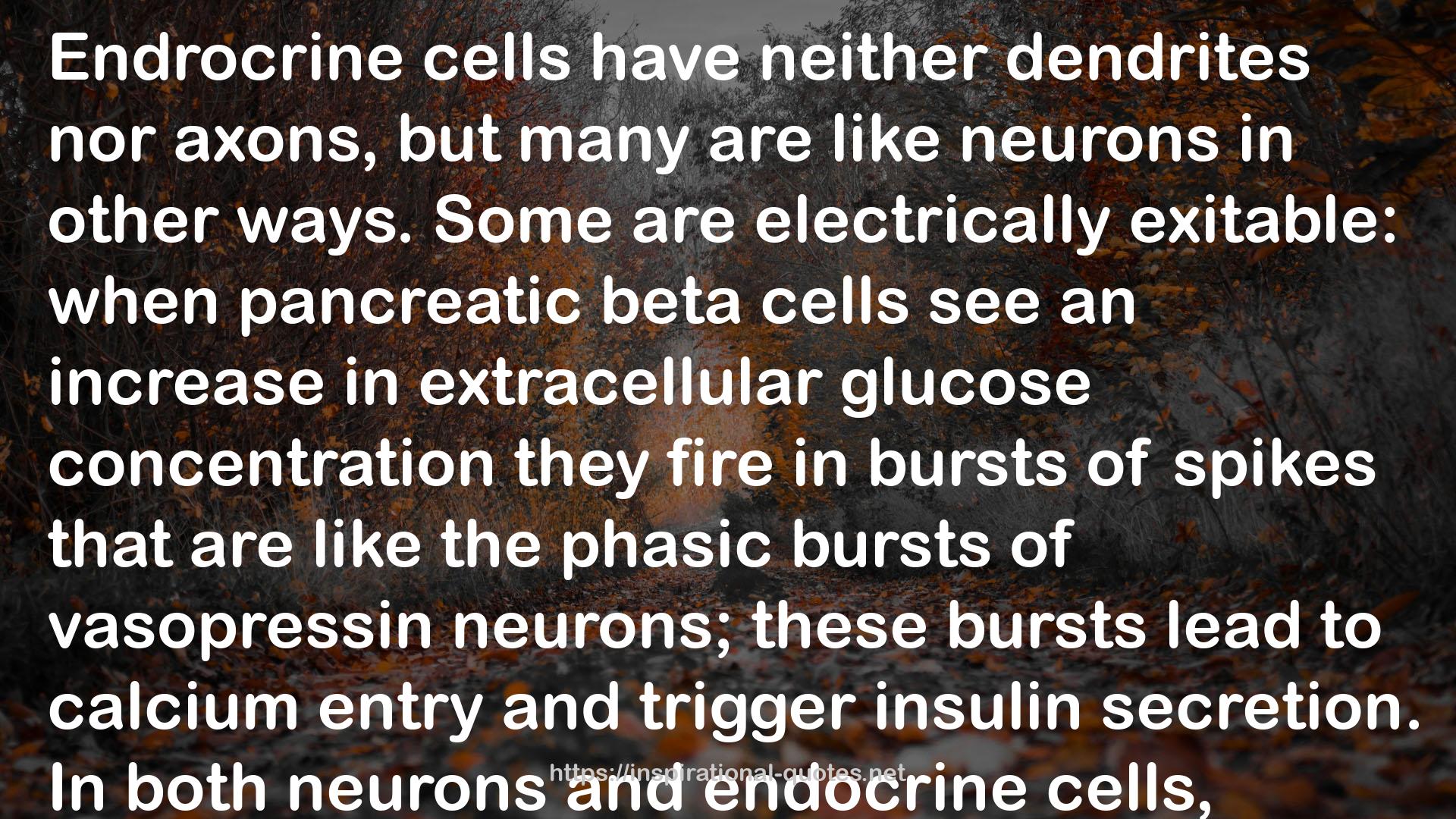" Endrocrine cells have neither dendrites nor axons, but many are like neurons in other ways. Some are electrically exitable: when pancreatic beta cells see an increase in extracellular glucose concentration they fire in bursts of spikes that are like the phasic bursts of vasopressin neurons; these bursts lead to calcium entry and trigger insulin secretion. In both neurons and endocrine cells, peptides are packages in vesicles just as neurotransmitters are. Typically, peptide secretion is the result of the same process as that by which neurotransmitters are released: exocytosis is triggered in both cases by an increase in intracellular calcium. In neurons, this happens when spikes depolarize the neuron, opening voltage-sensitive calcium channels, and the same occurs in spiking endocrine cells.
However, endocrine cells have another trick. Th cell bodies of all eukaryotic cells contain rough endoplasmic reticulum, which sequesters free calcium, and activation of receptors for some neurotransmitters or hormones can release calcium from these stores. In many endocrine cells, this 'calcium mobilization' can trigger exocytosis of vesicles without any involvement of spikes. There is no rough endoplasmic reticulum in axon terminals, so spikes are necessarily involved in the release of synaptic vesicles. "
― , The Heart of the Brain: The Hypothalamus and Its Hormones
